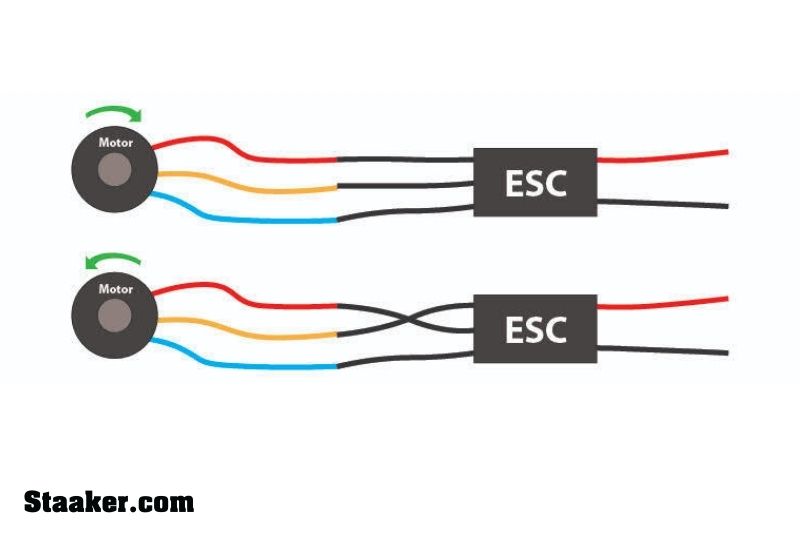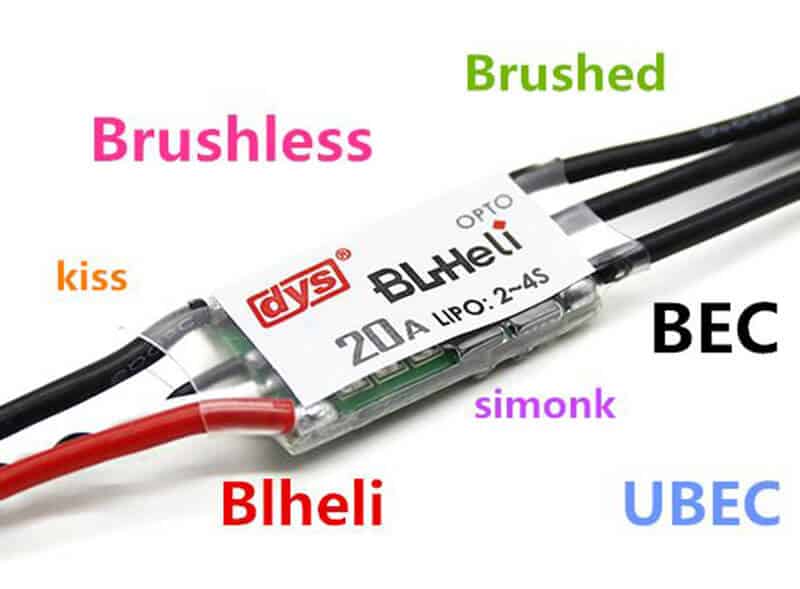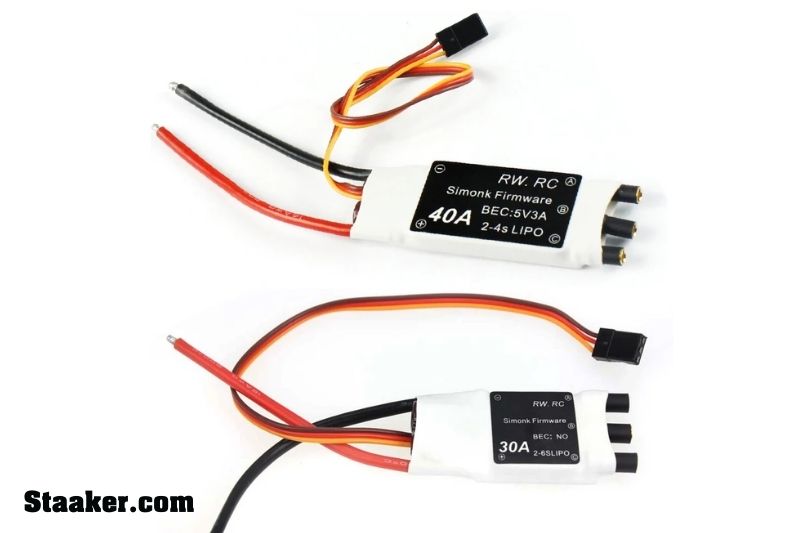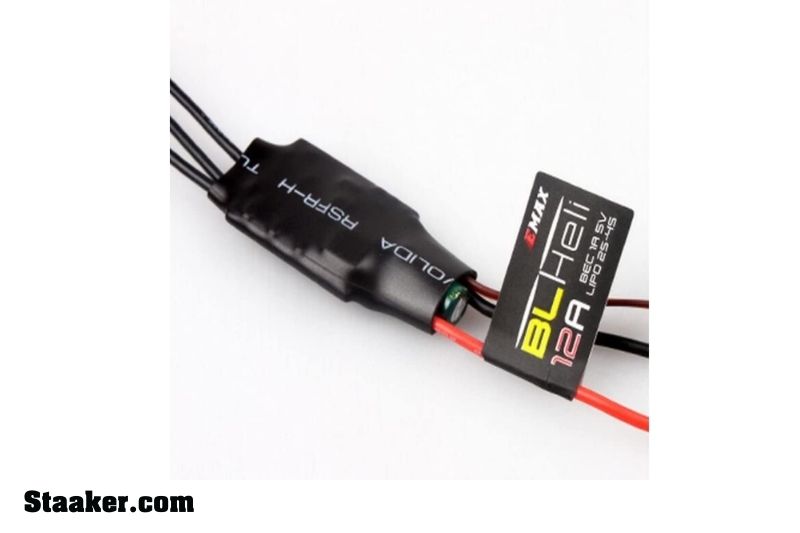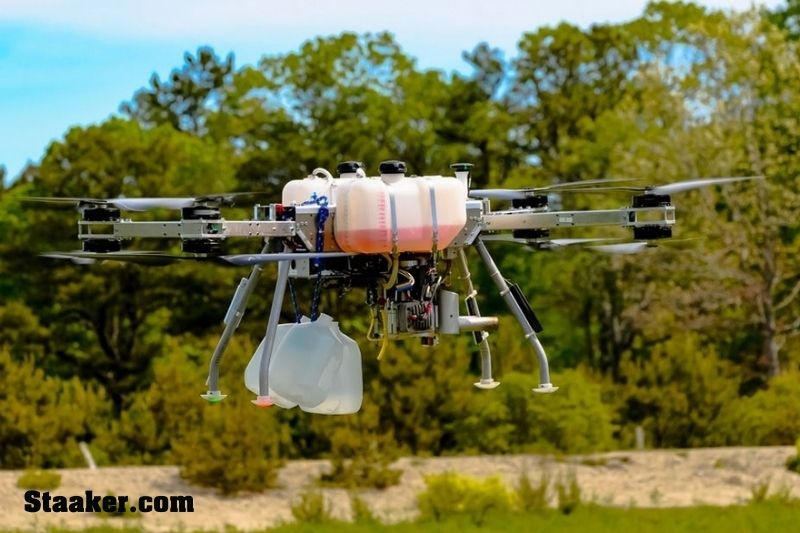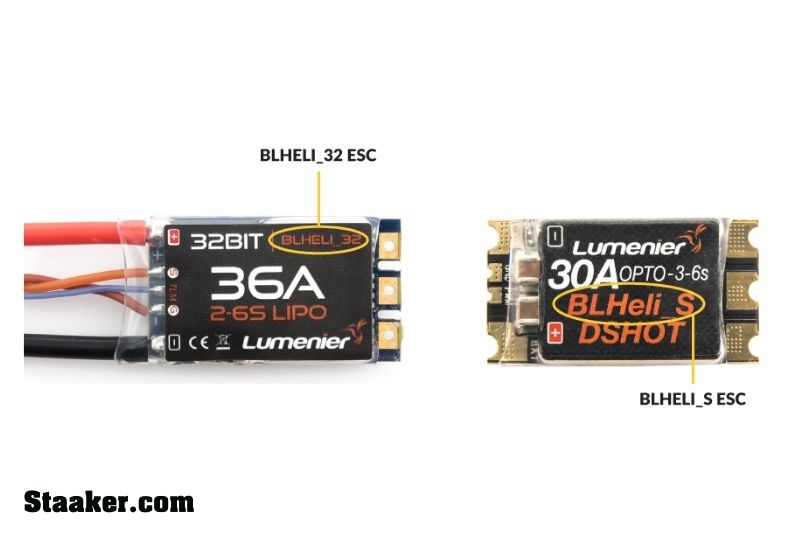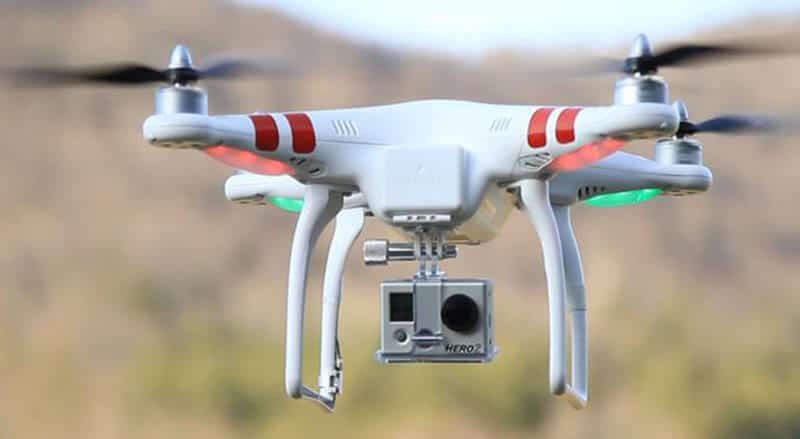How to Choose ESC for Quadcopter? Staaker will be covering the important factors that you should consider when purchasing ESC for Quadcopter.
ESC stands for Electronic speed controller and connects the FC and motor. They control the speed of motors.
The ESC works in the same manner as a car’s gearbox. It tells the wheels how fast they must turn, and the ESC controls the speed at which the motor must spin to apply the throttle. The flight controller sends this throttle signal to the ESC spinning motor.
Why do you need ESCs?
Quadcopters are unstable because they have four motors. It can be very chaotic because each motor provides thrust. Helicopters, on the other hand, only one set of blades provide thrust. They are also much more stable (the tail rotor counters the torque generated by the main rotor).
The flight controller is equipped with a sensitive gyro that detects the craft’s location and makes tiny connections every second to ensure the motors spin at the right speed to maintain stability.
The ESCs act as a middleman between the flight controllers and the motors. They send signals to the ESCs, which then signal the motors to adjust their speed.
The flight controller cannot communicate directly with motors without ESCs.
The ESCs send current to the motor through three wires. The amount of current they send determines the motor’s speed.
Read also: Quadcopter Vs Drone
Factors to consider when choosing ESC for quadcopter?
Current Rating
When choosing an ESC, the first thing you should consider is its current rating. The motors draw current as they spin. If the current rating or ampere rating is higher than your ESC capacity, it can overheat and eventually cause damage. After selecting the right size motor for you, determine the current rating of your ESC.
- Motors with high KV ratings
- Propellers with larger lengths and pitches are more efficient.
- Motor size larger (stator width and height)
There are two current ratings for ESC: continuous and burst. Continuous current ratings indicate the maximum continuous current that ESC can safely handle. Burst rating refers to the maximum current the ESC can handle in a short period (e.g., The burst rating is the maximum current that ESC can handle for a short time (e.g., 10 seconds) without damaging ESC.
Input Voltage Rating
An ESC’s voltage rating is the safest voltage it can handle. Some ESCs can handle 3S-4S batteries, while others can handle 6S. Make sure they work with the LiPo voltage. Your ESC and motor will be damaged if you use a high voltage to power them.
With or without BEC (Opto ESC’s)
BEC is a battery elimination circuit. A BEC provides a constant current at a specified voltage. BEC is often found in aircraft ESCs as they supply power to the plane’s electronics and other power requirements.
Quads don’t require ESC’s with BEC. The power requirements like powering a VTx, or powering a camera are taken care of by a dedicated PDB (power distribution boards) or PDB integrated into the FC’s. ESCs without a BEC are typically quieter, lighter, and smaller.
ESC Firmware
BLheli, SimonK, and KISS
Most ESCs use BLheli, SimonK, and KISS as their main firmware. KISS is a closed-source ESC, which means that KISS firmware can only be used by KISS ESC’s. BLheli and Simonk, however, are open source.
Simonk, an obsolete firmware, is no longer used. However, some ESCs of airplanes still use this firmware. BLheli firmware is the most popular because it has a rich feature set and a user-friendly interface.
BLHeli_S vs BLHeli_32
BLHeli_S, the second generation of BLHeli firmware for ESC’s is now available. They have an 8-bit processor and a simpler interface than previous generations.
BLHeli_S has a smoother response curve due to the hardware PWM. It has a small step resolution, ranging between 512 to 2048 steps. The signal response time delay is 1-2ms.
BLHeli_32, the third generation of firmware for ESCs with 32-bit MCU (micro control unit), is now a closed source.
These 32-bit ESCs are more powerful and have a higher processing power than their 8-bit counterparts. This increased processing power allows for faster input signals and lower latency.
As developments for faster protocols are in development, 32-bit ESC’s will be more reliable than the 8-bit versions. These ESCs include a current sensor that allows you to monitor the current consumption of individual ESCs while in flight.
All these additional features have a downside. Because it is closed-source, ESC manufacturers must pay a license fee to BLHeli. This means that the ESCs will be more expensive.
Weight and Size
The current rating of an ESC will affect the size and weight of an ESC. Most ESCs available today are similar in size and weight, with a range of 4-6g. It isn’t easy to make ESCs lighter without sacrificing performance and effective cooling.
Although lighter is better for racing, it is not wise to bargain on one of the most important parts of a quad. The smaller ESCs are more likely to heat quickly and require constant airflow. Even though smaller ESCs have heat sinks, they don’t provide enough cooling in most cases.
Connection of ESC with motor
To power up, ESC uses a LiPo lithium battery. The motor’s speed is controlled by the signal received from the flight controller. The three wires in a Brushless ESC are directly connected to the motor’s three wires. Below is a single standalone ESC that includes a LIPO battery, RC receiver, and a brushless motor.
ESC Protocols
Protocols can be described as the operating system for ESC. They control how fast communication between the ESC (flight controller) and ESC (electronic flight controller) occurs, which is crucial for the performance and handling of a quadcopter.
This is a listing of all current protocols that are used on quadcopters from the oldest to the most recent:
- Standard PWM
- Oneshot125
- Oneshot42
- Multishot
- DShot
- ProShot
For more information, refer to ESC Calibration Protocol.
ESC Processors
Most ESC uses processors from ATMEL, Silabs, and ARM Cortex. These processors all have different features, specifications and support different firmware.
- ATMEL 8-bit works with both BLHeli and SimonK firmwares
- SILABS 8 bit is compatible only with BLHeli_S or BLHeli_S
- ARM Cortex 32 bit (e.g., STM32 F0 and F3, L4 can be run with BLHeli_3
FAQs Regarding ESC for Quadcopter
Can I use a different ESC on my quadcopter?
Is it possible to use a different brand of ESC in a quadcopter or multicopter? It is possible but not recommended. It might work, but it is not recommended. Some flight controllers can spot an unbalanced multicopter and give it a higher power signal.
Source: https://oscarliang.com/use-different-brand-esc-together-copter/
How many amps ESC do I need?
An ESC could be damaged by excessive current. Motors that draw more current tend to be larger, while propellers with greater pitches and propellers with larger motors will draw more current. Currently, most pilots will be able to fly with a 30-amp ESC.
Source: https://www.getfpv.com/learn/new-to-fpv/all-about-multirotor-fpv-drone-electronic-speed-controller/
How do you match a motor ESC?
How do I know if my ESC has BEC?
You can tell if your ESC has a Linear BEC (LBEC) or a Switching BEC by looking at the components on its back. The label on the front will indicate if the ESC is a linear BEC or switch BEC.
Source: https://www.rcgroups.com/forums/showthread.php?1752501-how-you-know-if-an-esc-has-sbec
Conclusion
Make sure you have programing capability (throttle range, battery modes, etc.) and that you only choose ESCs with user reviews. Add all the weights to your calculation if you wish to payload capacity with your quadcopter. Would you please share your experiences on how to choose the best quadcopter ESC? We appreciate you taking the time and visiting staaker.com.
Video:


